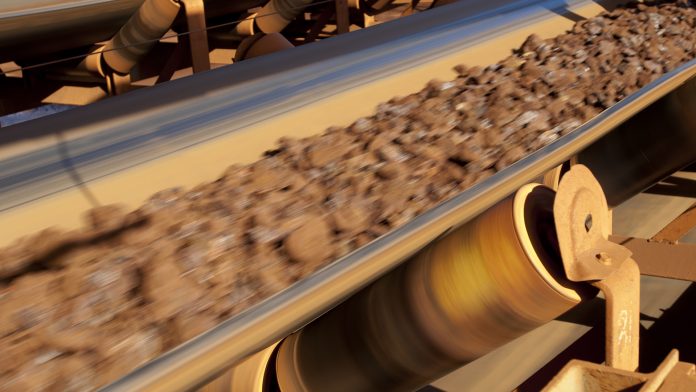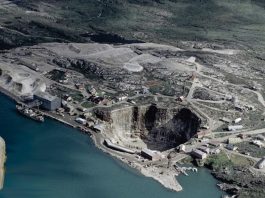A recent rare earth elements industry survey identifies the key constraints to diversify rare earth supply chains.
A recent publication in the Journal of Cleaner Production has identified the key constraints to develop rare earth (RE) projects outside China based on the results of an industrial survey.
The peer-reviewed article was a collaboration between the Global Rare Earth Industry Association (REIA), Monash University Malaysia, the University of Moratuwa, Sri Lanka and Imperial College London.
The authors interviewed CEOs of companies operating in the RE sector as well as researchers throughout Europe, US/Canada, Australia, and Asia.
Status Quo – RE Industry
Rare Earth Elements (REEs), 17 in total including the 15 lanthanides from the periodic table as well as Scandium and Yttrium, are of paramount importance to a myriad of industries that are essential to the world’s transition to green energy. As an example, REEs such as Neodymium, Praseodymium, Dysprosium and Terbium are used in wind turbines and electric vehicles (EVs).
Current supply chains are mainly fulfilled by the Chinese rare earth (RE) industry. China possesses 36% of the global REE reserves (44 million tonnes) with a mine production share in 2020 of 58% (U.S. Geological Survey, 2021). More critically, China accounted for 86.4% of the total separated and purified Rare Earth Ores production in 2019. This quasi monopoly has resulted in price volatility, supply chain uncertainties and RE trade disputes.
All major industrialised countries have committed to be carbon neutral by 2050 and several car manufacturers recently announced their plans to produce only EVs by 2030-2050. The global energy companies have been reviewing their renewable energy targets in line with the greenhouse gas emission targets set by different countries.
REIA’s Secretary General, Dr. Nabeel Mancheri, one of the leading authors of the publication commented: “The European Commission targets 30 million zero-emission vehicles by 2030 and aims for 60 GW of offshore wind by 2030 and 300 GW by 2050 as it seeks to steer countries away from fossil fuel-based energy and transport. On average, an offshore turbine requires up to 232 kg of Neodymium-Praseodymium per megawatt (NdPr/MW), which means that by 2030, the EU excluding the UK would require about 13 thousand tonnes of NdPr, and by 2050, 69.6 thousand tonnes only for wind turbines”.
Governments around the world and the main RE consumers have now understood the risks of supply concentration in a single source and this has highlighted the need for RE industry diversification and sustainable RE supply chains. However, there are many socio-techno-economic and mineralogical challenges in this diversification process.
Constraints to Diversify RE Supply Chains
Dr. Saman Ilankoon, co-author and senior lecturer in Chemical Engineering at Monash University Malaysia, wrote: “There are multiple constraints to establish RE projects and supply chains outside China and based on the literature and our expertise, we have identified 13. We then consulted RE industry CEOs and key researchers around the world to rate these constraints. Since the analysis of each of them would have been difficult, statistical analysis of the survey data was performed, and resulted in 4 key constraints”.
Business uncertainties within the RE industry and the Chinese RE supply chain controls were identified as the dominant constraints. Other challenges include waste management, recycling, and substitution; complexity in the establishment of RE separation and purification plants and high costs associated with it; RE ore geology variability.
Addressing the identified challenges with effective government and other support schemes would be the best way forward, otherwise the intended RE industry diversification is highly unlikely.
Positive RE Industry Developments
Despite the challenges and constraints mentioned above, there have been several recent developments outside China, which shall have a palpable impact on the diversification of supply in the next few decades.
Nimila Dushyantha, from the University of Moratuwa added, “Recent developments were reported especially in the USA, Canada, Europe, Australia and Africa, and these can be primarily categorised as new RE mines and processing plants, funding support schemes and niche RE purification techniques. We recognised these as encouraging signs for the diversification of the global RE industry, though the challenges still need to be properly addressed to see a significant impact. The new projects and their supply chains should be connected to RE downstream facilities outside China, for example, to RE value added products such as permanent magnets”.
REEs and Climate Change Outlook
The COP26 climate summit has recently concluded, highlighting the urgent emissions reduction targets. In this regard, the RE industry will play a crucial role. The current carbon neutrality and renewable energy targets are clear, including the requirements of EVs and wind turbines, while the global RE industry is still in a state of uncertainty considering RE supply chains and required diversifications. If the current measures and initiatives are successful, independent RE supply chains outside China could be seen by 2030-2050.
About REIA
REIA, a non-profit organisation, is the only global association advocating the rare earth Industry. Founded in 2019, REIA already counts 40 active members from around the world, representing key industry stakeholders throughout the whole rare earth value chain, policy makers, research institutes and academics.
Its core mission is to develop a more sustainable, responsible, collaborative, and transparent rare earth supply chain and to contribute to a better understanding of the rare earth value chain.
The organisation provides its members with a platform where they can network and benchmark; make their voice heard; find potential partners; access and share data, information, and best practices; get visibility and highlight their engagement towards a more sustainable supply chain.









